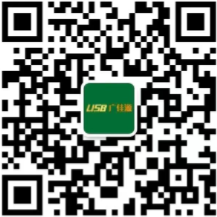 Mr. Chen:136-6225-2835
Mr. Chen:136-6225-2835
 Miss Chen:189-2385-0895
Miss Chen:189-2385-0895
Shenzhen Guangjiayuan Electronic Technology Co., Ltd
Mr. Chen: 136-6225-2835 (same WeChat account)
QQ: 979285705
Miss Chen: 189-2385-0895 (same WeChat account)
QQ: 2391552662
Chen Weiting :135-3824-4786 (same WeChat account)
Chen Weihao: 139-2459-4393 (same WeChat account)
Tel: 86-0755-33182327
Email: gjydz88@163.com
Website: www.usb-type.com
Address: Building 10, Hongxing Gebu Qixiang, Songgang Town, Bao'an District, Shenzhen, Guangdong Province
On the morning of February 24th, despite being obstructed by Apple, the European Parliament overwhelmingly passed the new regulations in January, setting a unified standard for mobile devices across the European Union. Foreign media MacRumors discussed what forms the EU may ultimately take to drive manufacturers to improve, and how these laws affect Apple device users in Europe and other regions.

What is the EU calling for in the Lightning interface currently used on iPhones? In order to reduce costs, reduce electronic waste, and facilitate consumer life, members of the European Parliament (MEPs) hope to take "binding measures" to ensure that mobile phone chargers can be uniformly applied to all smartphones, tablets, and other portable devices.
According to the 2019 evaluation study conducted by the European Union on commonly used chargers for portable devices, nearly one fifth of respondents said that due to different charger standards, it caused them a lot of trouble. These issues include incompatible chargers between devices, varying charging speeds between different chargers, and the need for multiple chargers to meet all needs.

At present, the iPhone fast charging line meets both the standard and its own standard. Therefore, the EU claims to end the disorderly standard of the charger and the situation of producing 51000 tons of Electronic waste every year by agreeing on a universal charger standard.
According to a briefing on the European Parliament website, a large proportion of the recent 582-40 votes in favor of the common standard. Previously, the European Commission only "encouraged" technology companies to develop standardized solutions, which did not meet the goals of co legislators.
How was the previous approach implemented? The European Commission's efforts to establish unified standards for smartphones have lasted for over a decade. In 2009, the European Commission estimated that there were 500 million mobile phones in all EU countries. Research has found that the chargers used often vary depending on the manufacturer and model, with over 30 different types of chargers available on the market.
In order to unify standards, the European Community negotiated a memorandum of understanding for 2009, which covered a total of 14 technology companies, including Apple, Samsung, Nokia, and other well-known smartphone manufacturers.
According to this memorandum, mobile phone manufacturers agree to adopt the European Union's unified micro USB interface standard for smartphone chargers, allowing fully compatible charging functions with mobile phones to be launched on the market.
At that time, it was planned that phone manufacturers would sell new phones with micro USB chargers for a period of time, and then the phones and chargers would be sold separately, so that customers who already had chargers could continue to use their existing chargers.
There is considerable speculation about whether Apple can meet the requirements of the micro USB standard. At that time, Apple used a dedicated 30 pin dock connector compatible with iPhone, iPad, and iPod Touch.

This adapter was also included in many Chinese mobile phones at the time, but this memo actually provided Apple with a workaround: for phones without a USB micro-b interface, according to the terms of the agreement, the adapter is allowed to be used. That's exactly what Apple does. In 2012, Apple launched a new Lightning interface for the iPhone 5, eliminating the old 30 pin connector and providing a separate Lightning to micro USB adapter for the new phone to comply with the 2009 EU agreement.
Therefore, Apple ultimately does not need to abandon its proprietary interface solution to achieve the same results as the memo. Why was the 2009 memorandum considered a failure? A progress report provided by the signatory in February 2013 showed that as of the end of 2012, 90% of the new devices launched by the signatory and other manufacturers supported a unified charging interface. But the reason why this statistic is so high is also because it includes Apple's support method of "curve saving the country".
A member of the European Commission will point out: "The view of citizens and the European Parliament is that universal chargers have not been implemented at all. Looking at what we have found in the most popular smartphones (i.e. iPhones), future memorandums must specify terms in their results, and we cannot accept adaptations
This progress has frustrated the European Commission. In 2014, the European Parliament passed the Radio Equipment Directive, calling for the "redevelopment of universal chargers". This directive grants the European Commission the power to directly formulate technical standards through delegated acts - in this case, legislative acts implementing EU rules.

Previously, the common chargers and data cables on Apple phones were to change the "suggested" execution plan to a "mandatory" execution plan. By 2016, the committee acknowledged that the micro USB interface was outdated and that USB C had become the actual standard for most devices. The memo maker informed the committee that all manufacturers except Apple are preparing to sign a new agreement and retain the option of using only the USB C interface.
Why is Apple opposed to using a unified charger? In 2016, Apple supported the use of USB C as the interface, but still opposed making domestically produced devices comply with standards. The company argues that meeting device standards would cost it up to 2 billion euros and hinder innovation, mainly because the iPhone is too thin to accommodate the USB C interface.
Apple even commissioned Copenhagen Economics to conduct a study outlining the potential harm to consumers caused by mandatory switching to universal chargers.
This study concludes that if a unified charger becomes law, consumers will lose 1.5 billion euros, exceeding 13 million euros in environmental effects losses (they mean that a unified charger means that users will have to abandon accessories such as cables and bases that have been compatible with old interfaces for many years). This study claims that 49% of EU households rely on different types of chargers, but only 0.4% of households experience significant problems.

In fact, Europe's own plugs also come in many forms, such as this British style plug. Apple's stance on this issue caused the committee to be deadlocked, but in 2018, the committee agreed to continue working with manufacturers to reach an appropriate voluntary agreement. A year later, the committee concluded that its previous voluntary practice and new memorandum still allowed manufacturers to use adapters with proprietary solutions, which would not result in the charger becoming fully universal.
Where will the EU go? In response to the European Commission's 2019 impact assessment on ordinary chargers, Apple stated that regulations mandating the use of the same charging interface for all smartphones will "stop innovation", "be detrimental to the environment", and cause unnecessary interference to customers ".
Apple believes that in addition to the accessories and device manufacturer ecosystem that use Lightning connectors, there are over 1 billion Apple devices that use Lightning interfaces. This forced unification by the European Union will force users to waste their previous devices. Items such as chargers or connection bases will cause unprecedented electronic waste and bring great inconvenience to users. Being forced to disrupt this huge customer market will have consequences that far exceed the committee's established goals.
The European Parliament voted on this issue in January 2020, with an overwhelming majority agreeing to interface standardization. However, it is unclear how its plan will be implemented. The committee's impact assessment proposed several possible options for the proposed legislation, including various permutations and combinations from the device end to the charger:
Option 0: The cable can have a USB C or dedicated connector on the device end, and the adapter can continue to be available for purchase (currently available).
Option 1: The cable must have a USB C interface on the device end (meaning Apple needs to replace the Lightning interface).
Option 2: The cable must have a USB C interface on the device end, or any manufacturer who wishes to use a dedicated interface on their device must include an adapter for USB C to dedicated connectors (currently, Apple provides a USB C to Lightning adapter) and a USB C AC power plug.
Option 3: The cable can have a USB C interface on the device end. Manufacturers who choose to use a dedicated interface must include a USB C plug in the accompanying accessories (Apple provides a USB C AC power plug, but iPhone can continue to use the Lightning connector).
Option 4: All interfaces on the device and plug must use USB C (Apple must produce USB C chargers).
Option 5: All interfaces on the device side must be USB C, and the manufacturer must include a new fast charging 15W+AC power plug (Apple must make a power plug that complies with USB PD).

The five options cover various combinations, and of course, the EU has also considered wireless charging as a potential solution. However, the committee has concluded that this is a "primitive technology" with an energy efficiency of about 60%, far lower than the efficiency of nearly for wired charging. Overall, the committee's impact assessment indicates that the most effective approach is to combine Option 1 (Unified Interface) with Option 4 (Interactive External Power Supply). If the committee agrees to this suggestion, Apple will have to change the interface. However, it remains to be seen whether the European Commission will accept the recommendations of its impact assessment and incorporate them into European Union law.

Wireless charging is not favored by the European Union. Can this initiative be effective? The EU's initiative aims to limit the diverse charger interfaces in the market while not hindering future technological innovation. By standardizing chargers, we aim to reduce prices, improve quality, reduce the presence of counterfeit chargers, and improve user safety.
The EU also expects to reduce/minimize the generation of Electronic waste by reducing the purchase of different types of chargers and by reusing existing chargers. The Impact Assessment believes that this will also increase consumer convenience, as users can not only charge their mobile phones, but also use a unified data cable (and charger) to charge other devices, and can choose to purchase a phone without a charger.

Apple's current Lightning conversion to USB C is considered half compliant, and it is currently unclear whether Apple will make changes in the global market to comply with European regulations. Regardless of the proposed legislative outcome, all indications indicate that Apple is currently firmly committed and will continue to lobby against the EU's intention to regulate the market.
After the recent parliamentary vote, Apple stated: "The industry has already used USB type-C through connectors or cable components, so we believe there is no need for regulation. This includes Apple USB C power supplies that are compatible with all iPhone and iPad devices. This method is cheaper and more convenient for consumers, can charge various portable electronic products, encourage people to reuse chargers and allow for innovation
Source: Sina Technology
Contact person:
Mr. Chen 136-6225-2835 (same WeChat account)
Miss Chen 189-2385-0895 (same WeChat account)
Chen Weiting 135-3824-4786 (same WeChat account)
Chen Weihao 139-2459-4393 (same WeChat account)
Address:
Building 10, Hongxing Gebu Qixiang, Songgang Town, Bao'an District, Shenzhen, Guangdong Province
 |
 |
| Technology 1 | Technology 2 |